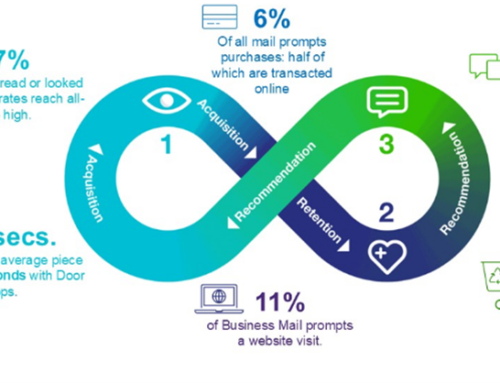In a world dominated by fleeting notifications and endless scrolling, the enduring impact of the printed word stands out more than ever.
The phrase “the pen is mightier than the sword” has become a timeless adage, but in marketing, it might be more accurate to say the pen is mightier than the screen.
Direct mail—tangible, thoughtful, and tactile—commands attention and creates connections in ways digital mediums struggle to replicate.
The Unique Power of Print: A Cognitive Advantage
When was the last time you truly savoured an email? Unlike digital communications, printed materials demand attention in a way that feels immersive and personal. Research consistently shows that the brain processes print differently—and often more effectively—than digital text.
For instance, a study published in Reading and Writing found that comprehension scores were higher for readers engaging with physical materials compared to screens. This is partly due to the tactile nature of print, which provides spatial and sensory cues, aiding memory and understanding. Similarly, a meta-analysis in Educational Research Review demonstrated that print readers retain and comprehend information better, particularly when navigating dense or complex texts.
This cognitive edge may stem from the way print encourages deep reading versus the skimming habits fostered by screens. Neuroscientific insights published by BrainFacts reveal that physical pages engage more areas of the brain associated with memory and emotional connection. In contrast, digital formats often encourage multitasking, diluting focus and retention.
The Psychology of Tangibility
There’s something inherently meaningful about holding a physical object. Direct mail taps into this psychology, offering a sensory experience that digital communication simply can’t replicate. Receiving a beautifully designed letter through your door feels personal.
Direct mail also carries an inherent sense of value. It requires effort to create, print, and send, which recipients subconsciously recognise. This perception can lead to higher trust and engagement. A study from the DMA revealed that direct mail achieves a response rate of 5.3% for prospect lists—far outpacing most digital channels.
What’s more, direct mail tends to linger. Unlike an email that gets buried or deleted in seconds, a piece of physical mail often sticks around. Industry research shows that advertising mail stays in households for an average of 17 days, creating multiple touchpoints for the recipient to engage with the brand.
A Proven Marketing Tool
Direct mail is more than nostalgic. For example, 60% of catalogue recipients visit the website of the brand that mailed them, demonstrating how print drives digital engagement. According to Marketreach, direct mail achieves an impressive 29% return on investment, outperforming online display ads and even paid search in certain scenarios.
Personalisation takes this effectiveness to the next level. Adding a recipient’s name or tailoring the message to their preferences can boost response rates by as much as 135%. This is where direct mail shines—creating a one-on-one connection that feels bespoke in an era of mass communication.
Print vs. Digital: A Lasting Impression
Digital marketing is undoubtedly effective for quick wins and broad reach, but its impact often fades as fast as it arrives. Direct mail, by contrast, has staying power. It’s memorable. It’s physical. And it resonates in a way that screens cannot.
The act of opening, touching, and reading a piece of mail activates more senses, creating a richer experience. This multi-sensory engagement fosters stronger emotional connections, which translate to higher brand loyalty and action. As Small Biz Genius reports, recipients of direct mail are 37% more likely to make a purchase than those targeted by email.
Why the Pen Still Prevails
The digital age has given us incredible tools for instant communication, but it has also created a noisy, fragmented world. In this environment, the printed word holds a unique ability to cut through the clutter and make a lasting impact.
Direct mail isn’t just marketing—it’s storytelling with substance. By leveraging the neuroscience of reading, the psychology of touch, and the enduring power of physical connection, marketers can craft campaigns that resonate deeply.
Indeed, in the battle for attention, the metaphorical pen remains mightier than the digital sword.





